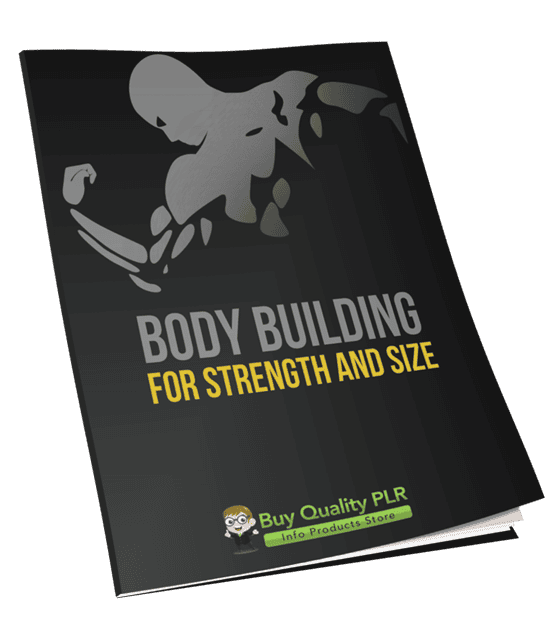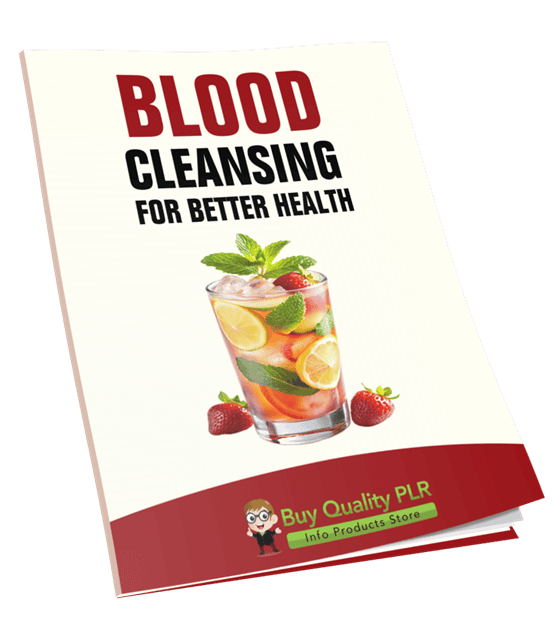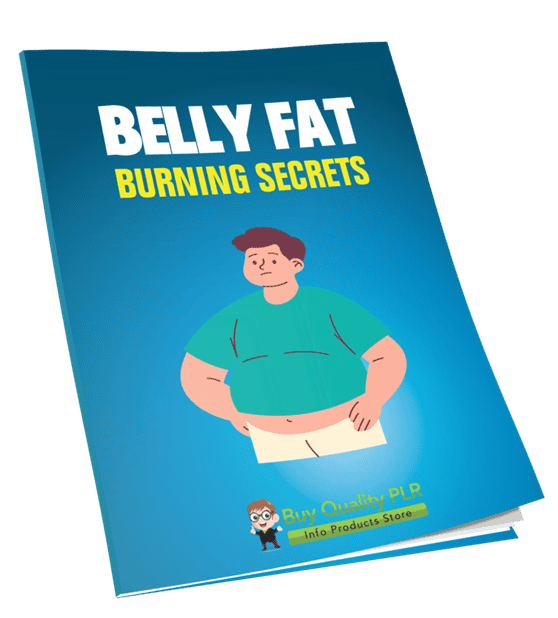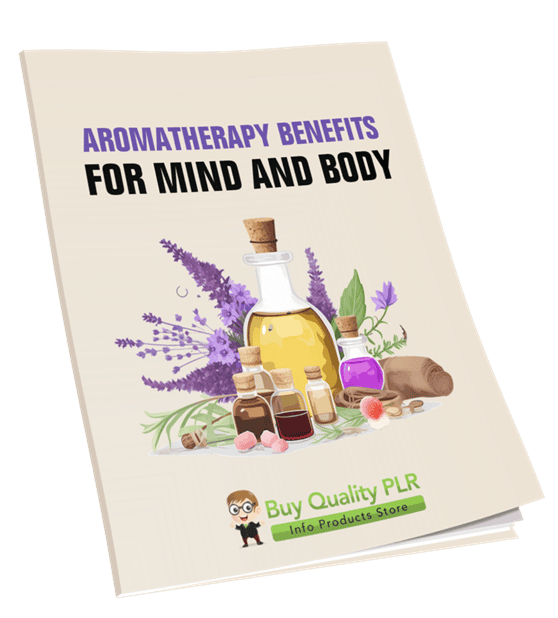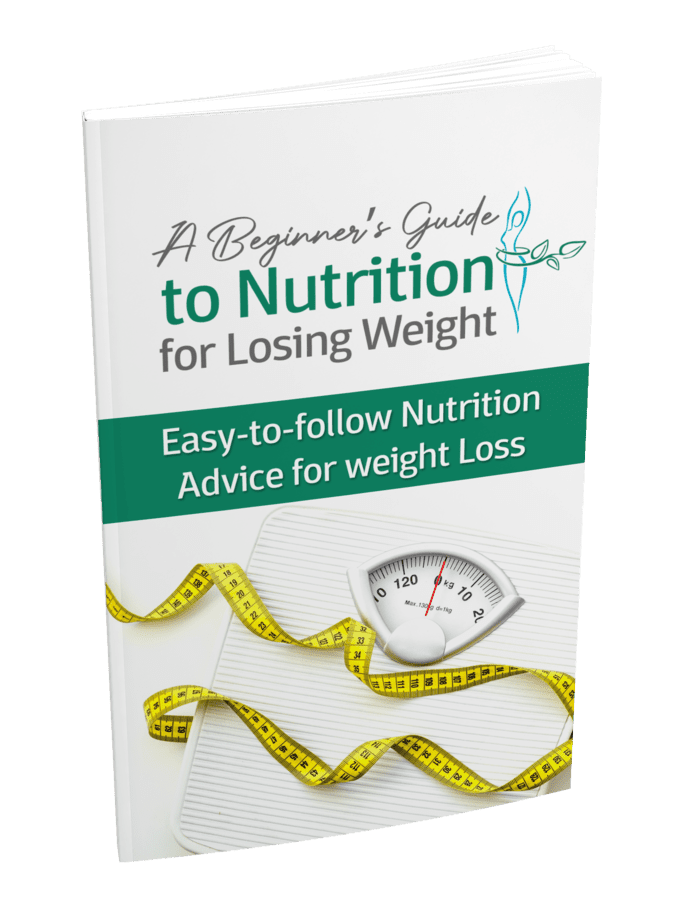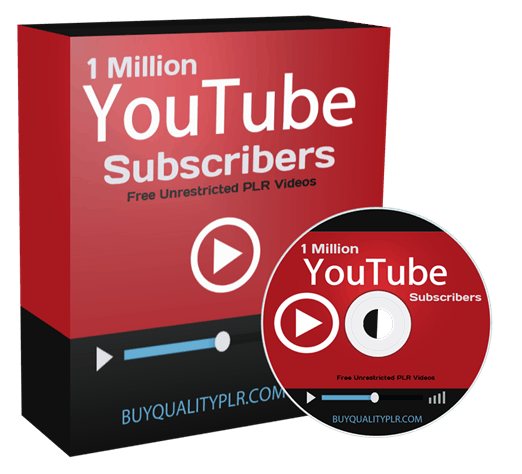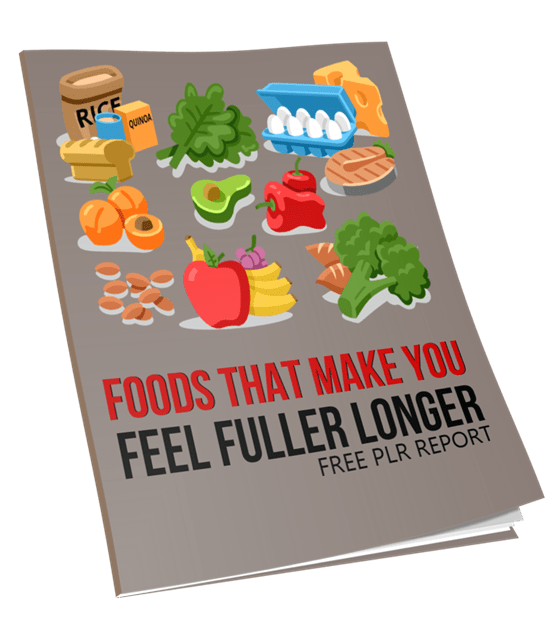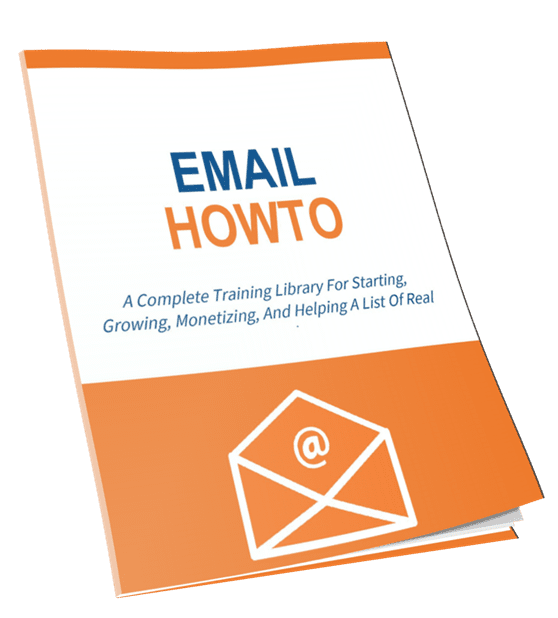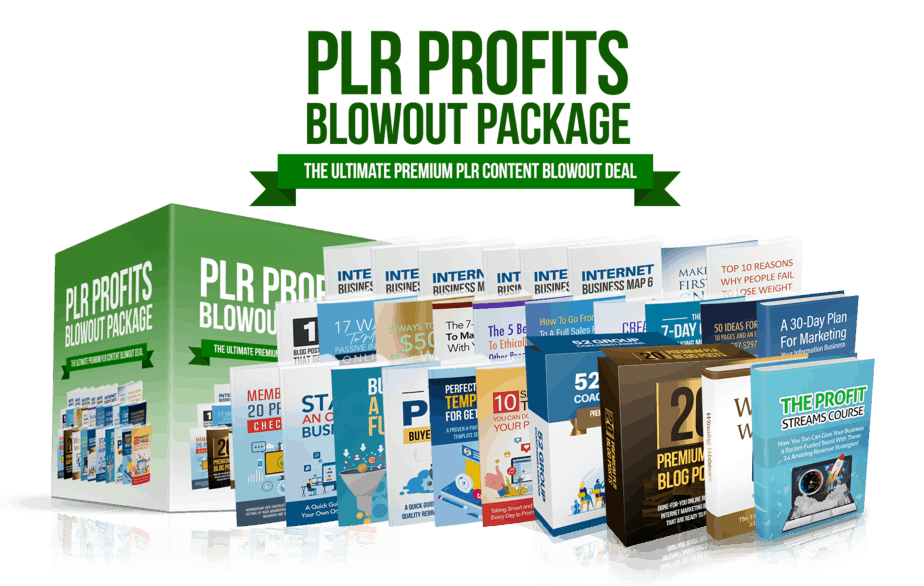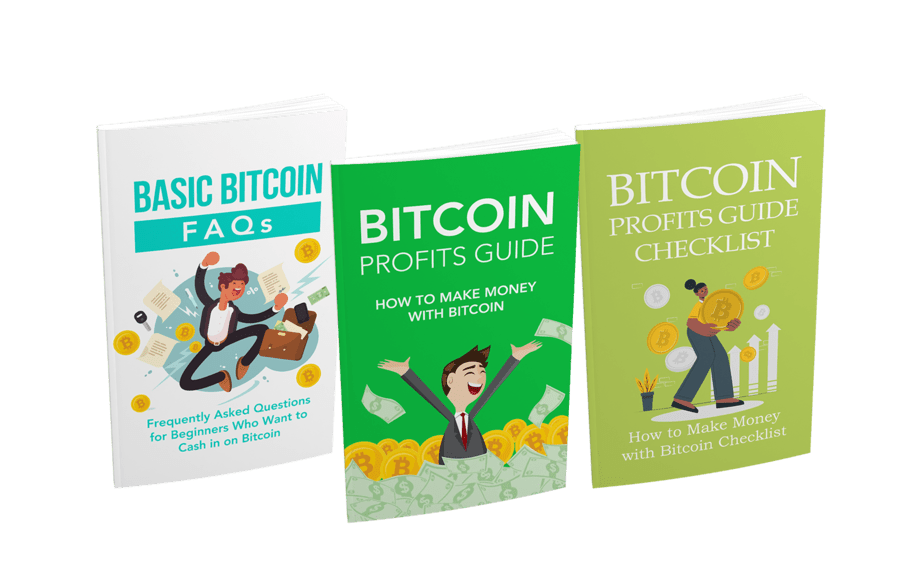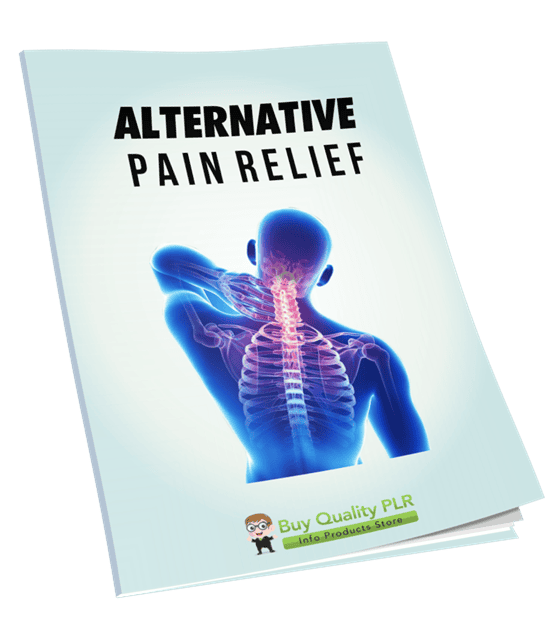
Alternative Pain Relief PLR Course 22k Words
in Back Pain PLR , Joint Pain PLR , Pain PLR , Pain PLR Ebooks , PLR eBooks , PLR eCourses , PLR List Building Reports , Premium PLR , Premium PLR eBooks , Premium PLR Reports , Premium White Label Brandable PLR Coaching Courses , Private Label Rights ProductsChoose Your Desired Option(s)
has been added to your cart!
have been added to your cart!
#alternativepainrelief #painrelieftips #naturalhealing #holistichealth #plrcourse #chronicpainhelp #wellnesscontent #healthplr #plrproducts #painreliefsolutions
Alternative Pain Relief: A Step-by-Step Guide to Natural Healing
Transform Your Approach to Pain Relief with Alternative Methods
Are you tired of relying solely on medications to manage your pain? The Alternative Pain Relief PLR Course offers you natural, holistic methods that are proven to reduce pain and improve well-being. This 20,214-word course provides step-by-step strategies, techniques, and lifestyle changes that can help you or your clients take control of pain, all while fostering a healthier, more sustainable way of living.
By the end of this course, you will have a personalized toolkit of natural pain management strategies, empowering you to relieve pain through safe and effective methods without depending on pharmaceutical solutions.
Presenting…
Alternative Pain Relief PLR Course 25k Words
What’s Included in the Alternative Pain Relief PLR Course
This Alternative Pain Relief PLR Course is designed to provide practical, evidence-based solutions for pain management. Whether you’re dealing with chronic pain, recovering from an injury, or simply looking for ways to feel better every day, this course covers everything you need to know.
Module 1: Understanding Pain & Holistic Healing
Begin your pain relief journey by understanding the science of pain and why holistic methods work.
- What is Pain and Why Does It Happen?
Learn about different types of pain and how the brain processes pain signals. - Why Choose Alternative Pain Relief?
Discover the benefits of natural methods over conventional treatments. - The Mind-Body Connection
Learn how emotions, stress, and trauma affect your pain levels. - Creating Your Personalized Pain Relief Plan
Set realistic goals for managing pain and track progress.
Module 2: Natural Remedies for Pain Relief
Explore various natural remedies that can ease your pain and improve your quality of life.
- Herbal Remedies & Essential Oils
Learn about the powerful effects of herbs like turmeric and willow bark, and essential oils like peppermint and lavender. - Acupressure & Reflexology
Discover how specific pressure points can relieve pain and provide instant relief. - Heat & Cold Therapy
Master the techniques of using heat and cold to reduce muscle and joint pain. - Supplements for Pain Management
Learn how magnesium, CBD oil, and Omega-3s can naturally alleviate pain.
Module 3: Movement & Bodywork for Pain Relief
Gentle movement and body-based therapies are key to long-term pain relief.
- Stretching & Yoga for Pain Management
Discover specific yoga poses and stretches for back pain, joint pain, and headaches. - Massage & Self-Massage Techniques
Learn effective massage techniques to target pain points and release tension. - Posture & Ergonomics
Improve your posture to prevent and manage pain in the neck, back, and joints. - Breathing & Relaxation Techniques
Use deep breathing and guided relaxation exercises to calm your nervous system and reduce pain.
Module 4: Mind-Body Techniques for Pain Management
Pain is not only physical—it’s also mental and emotional. This module shows how tapping into your mind can reduce pain levels.
- Meditation & Mindfulness
Learn simple meditation practices that help manage chronic pain by rewiring the brain’s response. - Guided Imagery & Visualization
Use mental exercises to visualize pain relief and bring a sense of calm. - Emotional Freedom Technique (Tapping)
Learn how tapping on specific acupressure points can reduce pain and emotional stress. - Sleep & Pain Connection
Discover the link between poor sleep and heightened pain levels, and how to improve your rest to aid in healing.
Module 5: Lifestyle Changes for Long-Term Pain Relief
Incorporating these lifestyle changes can support long-term pain management and overall well-being.
- Anti-Inflammatory Diet
Discover how your diet affects inflammation and learn which foods can reduce pain naturally. - Hydration & Detoxification
Understand the importance of staying hydrated and detoxing to relieve pain. - Daily Movement & Low-Impact Exercises
Build a sustainable movement routine with low-impact activities like walking, swimming, and tai chi. - Building a Support System & Staying Motivated
Learn how to stay on track with pain relief methods and seek support from a community of like-minded individuals.
Bonuses Included with Your PLR Course
- Alternative Pain Relief Checklist
A 765-word checklist to ensure you’re implementing the best pain relief practices from the course. - Alternative Pain Relief FAQs
A 859-word FAQ page answering the most common questions about alternative pain relief. - Sales Page for Alternative Pain Relief
A 486-word sales page that you can use to sell this course and promote it to your audience.
How You Can Profit from This Course
The Alternative Pain Relief PLR Course is a comprehensive, ready-to-sell PLR package that you can leverage in various ways to generate income:
- Sell as-is: You can sell the course directly on your website or through platforms like Udemy or Teachable.
- Create a membership site: Offer exclusive access to the course and charge a monthly subscription fee for ongoing content and updates.
- Repurpose into videos: Turn the course content into video lessons and sell them as a premium course.
- Use as a lead magnet: Offer sections of the course for free in exchange for email sign-ups and use it to grow your email list.
- Bundle with other health content: Package the course with other health-related PLR content to increase its value and sell it as a bundle.
Licensing Terms
The Alternative Pain Relief PLR Course comes with full resell rights, meaning you can use and profit from the content in various ways:
- Sell the content as-is or with minor tweaks to make it your own
- Break up the content into smaller reports and sell them individually ($10-$20 each)
- Bundle with other products to create larger, higher-priced offerings ($47-$97 each)
- Create a membership site and charge monthly subscription fees
- Repurpose the course into videos, audios, or physical products
- Use it as a lead magnet by offering excerpts to attract subscribers
What You Can’t Do with This Course
- Resell the PLR rights: You cannot pass on PLR rights to your customers.
- Give away the complete content for free: You must sell the content; however, excerpts or edited portions can be given away.
- Offer 100% affiliate commission: The maximum affiliate commission you may offer is 75%.
Start Your Journey to Pain Relief Today!
Don’t let pain control your life. With the Alternative Pain Relief PLR Course, you can help others and yourself discover natural, holistic ways to manage and alleviate pain.
Get started today and unlock the power of alternative pain relief for only $14.99!
Click here to purchase your copy of the Alternative Pain Relief PLR Course and start your natural pain relief journey today!
has been added to your cart!
have been added to your cart!
Here A Sample of Alternative Pain Relief PLR Course
Pain can be overwhelming, but you don’t have to rely on medication alone. This course will introduce you to natural and holistic ways to manage pain. You’ll learn about powerful techniques, lifestyle changes, and alternative treatments that can help you take control of your well-being.
By the end of this course, you’ll have a personalized pain management toolkit filled with strategies that work for you!
Module 1: Understanding Pain & Holistic Healing
Let’s start by understanding what pain really is and why alternative approaches can help.
Step 1: What is Pain and Why Does It Happen?
Pain is a universal human experience, yet it is often misunderstood. Before exploring alternative pain relief methods, it is essential to understand what pain is, the different types of pain, and how the brain and nervous system process it. This foundational knowledge will help you make informed decisions about pain management and alternative treatments.
1.1 Understanding Pain: The Body’s Warning System
Pain is the body’s way of signaling that something is wrong. It acts as a protective mechanism, alerting us to potential harm and triggering responses that promote healing. Pain can be caused by injury, illness, nerve damage, or even emotional stress.
Key Functions of Pain:
- Warning Signal: Pain alerts the body to injury or dysfunction.
- Healing Response: It encourages rest and recovery.
- Protective Mechanism: Prevents further damage by modifying behavior.
Pain perception varies among individuals due to factors such as genetics, past experiences, and emotional state. Understanding these variations is crucial when developing pain relief strategies.
1.2 Different Types of Pain
Pain is classified into several categories based on duration, cause, and location.
1. Acute Pain
Acute pain is short-term and occurs suddenly in response to injury or illness. It serves as an immediate warning and usually fades as the body heals.
Common Causes:
- Injury: Cuts, burns, or fractures.
- Surgery: Postoperative pain from incisions and procedures.
- Infections: Toothaches, sinus infections, or ear infections.
2. Chronic Pain
Chronic pain lasts longer than three months and often persists despite medical treatment. It may be linked to an underlying condition or occur without a clear cause.
Common Causes:
- Arthritis: Joint inflammation leading to persistent pain.
- Fibromyalgia: Widespread muscle pain and fatigue.
- Back Pain: Often caused by poor posture, injuries, or herniated discs.
Chronic pain can impact daily life, leading to stress, anxiety, and reduced mobility. Unlike acute pain, it does not always serve a protective function.
3. Neuropathic Pain (Nerve Pain)
Neuropathic pain results from nerve damage or dysfunction. It often feels like burning, tingling, or electric shocks.
Common Causes:
- Diabetes (Diabetic Neuropathy): Nerve damage due to high blood sugar.
- Shingles (Postherpetic Neuralgia): Persistent nerve pain after a shingles infection.
- Spinal Cord Injury: Nerve disruption causing pain signals without actual injury.
4. Nociceptive Pain
Nociceptive pain is caused by tissue damage and is often described as sharp, aching, or throbbing. It can be further classified as:
- Somatic Pain: Originates in muscles, bones, skin, or joints (e.g., a broken bone).
- Visceral Pain: Comes from internal organs (e.g., stomach cramps, kidney stones).
5. Psychogenic Pain
Psychogenic pain is influenced by emotional, psychological, or social factors. It can occur in the absence of a physical cause.
Common Causes:
- Depression or Anxiety: Emotional distress can intensify pain perception.
- Post-Traumatic Stress Disorder (PTSD): Can lead to chronic pain syndromes.
Understanding these different types of pain helps in choosing appropriate pain management techniques.
1.3 How the Brain and Nervous System Process Pain
Pain is not just a physical sensation; it is a complex interaction between the nervous system and the brain. The process of pain perception involves multiple steps:
Step 1: Pain Detection (Nociception)
- Specialized nociceptors (pain receptors) detect harmful stimuli such as heat, pressure, or chemicals.
- These receptors send electrical signals through nerves to the spinal cord.
Step 2: Pain Transmission
- Nerve fibers transmit pain signals to the spinal cord, which acts as a relay station.
- The spinal cord processes and modulates the signal before sending it to the brain.
Step 3: Pain Perception in the Brain
- The brain analyzes and interprets pain signals in various regions:
- Thalamus: Processes and directs pain signals.
- Somatosensory Cortex: Identifies the location and intensity of pain.
- Limbic System: Links pain to emotions (fear, anxiety, frustration).
Step 4: Pain Response and Modulation
- The brain decides how to respond to pain (e.g., withdrawal reflex, increased heart rate).
- Endorphins and other natural painkillers may be released to reduce pain intensity.
Pain Modulation: Why Some People Feel More Pain Than Others
Pain is not experienced equally by all individuals. Several factors influence pain perception:
- Genetics: Some people have a lower or higher pain threshold.
- Emotions: Stress and anxiety can amplify pain.
- Previous Experiences: A history of pain can make future pain seem worse.
- Cultural and Social Factors: Beliefs about pain influence how it is expressed and managed.
1.4 Why Alternative Pain Relief Works
Since pain involves both physical and emotional aspects, alternative treatments aim to target both. Unlike conventional medication, which often focuses on numbing pain, holistic approaches work by:
- Reducing inflammation (herbal remedies, nutrition).
- Calming the nervous system (meditation, acupuncture).
- Improving blood flow (massage, exercise).
- Rewiring pain perception (mindfulness, cognitive techniques).
By understanding pain at its core, you can explore alternative solutions that address both body and mind, leading to long-term relief.
Key Takeaways from Step 1
- Pain is a protective mechanism that alerts the body to potential harm.
- There are different types of pain, including acute, chronic, neuropathic, nociceptive, and psychogenic pain.
- Pain is processed in the nervous system and influenced by multiple brain regions.
- Pain perception varies among individuals due to genetics, emotions, and past experiences.
- Alternative pain relief methods target both the physical and emotional components of pain for lasting relief.
Now that you understand the basics of pain, the next step is to explore natural remedies and holistic approaches to pain relief.
Step 2: Why Choose Alternative Pain Relief?
Pain management is a crucial part of overall well-being, and while conventional medicine provides quick relief through pharmaceuticals and medical procedures, alternative pain relief methods offer a more holistic, natural, and long-term approach. In this step, we will explore the benefits of alternative pain relief, compare it to conventional treatments, and learn from real-life success stories of individuals who have experienced transformative healing through holistic methods.
2.1 Understanding the Difference: Conventional vs. Alternative Pain Relief
Conventional Pain Relief: The Medical Approach
Conventional medicine primarily focuses on symptom relief using pharmaceutical drugs, surgeries, and medical interventions. While these methods can be effective in treating acute and severe conditions, they often come with side effects, dependency risks, and limited long-term solutions.
Common Conventional Treatments for Pain:
- Pain Medications (Analgesics & NSAIDs)
- Over-the-counter drugs like ibuprofen and acetaminophen.
- Prescription opioids (morphine, oxycodone) for severe pain.
- Concerns: Can cause addiction, liver damage, and stomach ulcers.
- Corticosteroid Injections
- Used for joint pain and inflammation (arthritis, tendonitis).
- Concerns: Temporary relief, potential cartilage damage over time.
- Surgeries and Invasive Procedures
- Spinal fusion, joint replacements, or nerve blocks.
- Concerns: High costs, long recovery periods, potential complications.
While conventional medicine is useful in emergencies, it does not always address the root cause of pain—which is why many people seek alternative solutions.
Alternative Pain Relief: A Holistic Approach
Alternative pain relief methods focus on natural healing, treating the body and mind as a whole. These methods often improve overall well-being, rather than just masking symptoms.
Key Principles of Alternative Pain Relief:
✅ Addresses the Root Cause – Treats underlying imbalances rather than just symptoms.
✅ Supports Natural Healing – Helps the body repair itself using non-invasive techniques.
✅ Minimal Side Effects – Unlike pharmaceuticals, most holistic treatments do not cause harm.
✅ Personalized Healing – Tailored to individual needs and lifestyle.
Common alternative pain relief techniques include:
- Herbal Remedies (Turmeric, Ginger, Arnica)
- Acupuncture (Stimulating energy flow through meridians)
- Chiropractic Care (Spinal adjustments to relieve nerve pressure)
- Meditation & Breathwork (Reducing stress-related pain)
- Massage Therapy (Improving circulation and muscle relaxation)
2.2 The Benefits of Choosing Alternative Pain Relief
Choosing natural pain relief techniques does not mean rejecting modern medicine. Instead, it is about incorporating safe, non-invasive, and effective approaches into daily life. Let’s look at some key benefits:
1. Long-Term Healing Instead of Temporary Fixes
- Conventional painkillers provide quick relief but do not heal the root cause.
- Alternative therapies restore balance, improve function, and prevent recurrence.
💡 Example: Instead of taking muscle relaxants for chronic back pain, you could use a combination of yoga, acupuncture, and physical therapy to strengthen muscles and correct posture.
2. Fewer Side Effects and Lower Health Risks
- Many pain medications come with harmful side effects such as drowsiness, nausea, addiction, or organ damage.
- Alternative methods, like herbal supplements or meditation, have little to no adverse effects.
💡 Example: A person with arthritis may choose curcumin supplements (from turmeric) instead of long-term NSAIDs, avoiding gastrointestinal damage while still reducing inflammation.
3. Holistic Benefits for the Entire Body
- Natural healing techniques do not just reduce pain; they improve sleep, digestion, stress levels, and mental clarity.
- Many alternative approaches also boost immune function and energy levels.
💡 Example: Practicing Tai Chi or Qigong for pain relief also enhances balance, flexibility, and emotional well-being.
4. Empowerment and Self-Care
- Alternative methods encourage active participation in healing, rather than just relying on doctors and prescriptions.
- Many holistic practices, such as massage therapy, essential oils, or guided relaxation, can be done at home without ongoing medical expenses.
💡 Example: Someone suffering from migraine pain may use essential oils (peppermint, lavender), acupressure, and breathing exercises, giving them control over their pain rather than relying solely on medication.
5. Cost-Effective and Accessible
- Many natural therapies cost less than ongoing medical treatments, surgeries, or expensive prescriptions.
- Methods like yoga, mindfulness, or hydrotherapy require little to no cost and can be practiced anywhere.
💡 Example: A patient with chronic joint pain may spend thousands on doctor visits and medications, but by integrating dietary changes, gentle movement (like swimming), and natural supplements, they could significantly reduce costs.
2.3 Success Stories: Real People, Real Results
Many individuals worldwide have turned to alternative pain relief and experienced life-changing results. Let’s look at a few inspiring success stories:
Case Study 1: Overcoming Chronic Back Pain with Holistic Healing
📍 Background: Emily, a 45-year-old office worker, suffered from chronic lower back pain due to prolonged sitting and poor posture. Doctors prescribed painkillers and muscle relaxants, but the relief was temporary, and the side effects affected her daily life.
🔹 Holistic Approach Used:
- Chiropractic Adjustments to correct spinal alignment.
- Daily Yoga & Stretching to strengthen core muscles.
- Anti-Inflammatory Diet (avoiding processed foods, increasing omega-3 intake).
- Acupuncture to improve blood circulation.
✅ Results: After three months, Emily experienced an 80% reduction in pain, improved mobility, and no longer needed pain medication.
Case Study 2: Healing Migraines Naturally
📍 Background: Raj, a 38-year-old engineer, had suffered from debilitating migraines for over a decade. Prescription drugs provided relief but led to dizziness and nausea.
🔹 Holistic Approach Used:
- Essential Oil Therapy (peppermint and lavender for pain relief).
- Breathwork & Meditation to reduce stress triggers.
- Acupressure Therapy for instant headache relief.
- Hydration & Magnesium Supplements to prevent migraines.
✅ Results: Within six months, Raj’s migraine frequency reduced by 70%, and he could manage pain without medication.
Case Study 3: Beating Arthritis Pain Through Natural Remedies
📍 Background: Maria, a 60-year-old retired teacher, was diagnosed with osteoarthritis and struggled with knee pain. Doctors recommended steroid injections, but she wanted a more natural approach.
🔹 Holistic Approach Used:
- Turmeric & Ginger Supplements for anti-inflammatory effects.
- Aqua Therapy (Swimming & Water Exercises) to ease joint pain.
- Massage & Acupuncture for muscle relaxation.
- Mindfulness & Stress Reduction to lower inflammation.
✅ Results: Maria regained flexibility and reduced pain by 60%, avoiding invasive treatments.
Key Takeaways from Step 2
- Alternative pain relief focuses on healing the root cause rather than just masking symptoms.
- Natural remedies have fewer side effects and improve overall well-being.
- Holistic approaches empower individuals to take control of their pain management.
- Success stories show that alternative therapies work for chronic pain, migraines, arthritis, and more.
- Combining multiple natural methods often leads to the best results.
By choosing alternative pain relief, you’re investing in long-term healing and a healthier, more balanced life. In the next step, we will dive into specific natural pain relief techniques and how to integrate them into daily routines.
Step 3: The Mind-Body Connection
Pain is not just a physical sensation—it is deeply connected to our thoughts, emotions, and past experiences. Many people assume that pain only comes from physical injuries or illnesses, but scientific research has shown that stress, emotions, and trauma can amplify or even cause pain. This step will guide you through understanding the mind-body connection, how stress and trauma influence pain, and how shifting your mindset can play a significant role in pain relief.
3.1 Understanding the Mind-Body Connection
The mind-body connection refers to how our thoughts, emotions, and mental state directly impact our physical health. When we experience stress, anxiety, or emotional distress, our body responds in ways that can increase pain and discomfort.
How Does the Brain Process Pain?
Pain is processed by the nervous system, which includes:
- The Brain – Interprets pain signals and determines how much pain we feel.
- The Spinal Cord – Transmits pain signals to and from the brain.
- Nerves – Carry signals from injured or stressed body parts to the spinal cord.
Pain is not just a physical response to injury—it is influenced by our emotions, past experiences, and mental state. This means that if we are stressed, anxious, or depressed, we may experience more pain than someone who is in a calm and relaxed state.
The Role of the Nervous System in Pain Perception
Our nervous system has two important parts:
- Sympathetic Nervous System (Fight or Flight Mode)
- When we are stressed or anxious, our body releases stress hormones (like cortisol and adrenaline).
- These hormones increase muscle tension, inflammation, and nerve sensitivity, making pain feel worse.
- Parasympathetic Nervous System (Rest and Heal Mode)
- This system helps the body relax, recover, and heal.
- When activated, it reduces inflammation, calms the nervous system, and decreases pain sensitivity.
💡 Key Insight: Chronic stress keeps our body in “fight or flight” mode, which means our muscles stay tight, our nerves remain overactive, and our pain levels increase. Learning how to calm the nervous system can naturally reduce pain.
3.2 How Stress, Emotions, and Trauma Affect Pain
Many people underestimate the connection between their emotions and physical pain. However, research shows that negative emotions can trigger or worsen pain conditions like:
- Chronic back pain
- Migraines and headaches
- Fibromyalgia
- Arthritis
- Irritable bowel syndrome (IBS)
1. Stress and Pain: A Dangerous Cycle
Stress and pain create a vicious cycle:
- Stress Increases Muscle Tension → Tight muscles cause stiffness and pain.
- Stress Triggers Inflammation → Inflammatory chemicals worsen pain conditions.
- Stress Lowers Pain Tolerance → The brain becomes more sensitive to pain.
- Pain Increases Stress → When we feel more pain, we become even more stressed, creating a never-ending loop.
💡 Example: A person with chronic neck pain may notice that their pain gets worse during stressful periods, such as work deadlines or family conflicts. This is because stress tightens muscles and heightens pain sensitivity.
2. Emotional Trauma and Pain Memory
Pain is not only caused by physical injuries—it can also be triggered by past emotional trauma.
- If someone experienced abuse, neglect, or a severe accident, their brain may have developed heightened pain sensitivity.
- This is because the brain remembers traumatic events and can react with pain signals even if there is no physical injury.
- This is often seen in chronic pain conditions like fibromyalgia and PTSD-related pain.
💡 Example: A person who was in a car accident years ago may still feel chronic back pain, even though doctors cannot find a physical cause. The pain persists because their nervous system is stuck in a trauma response.
3. Anxiety and Depression Worsen Pain
- Anxiety increases muscle tension and makes the body hypersensitive to pain signals.
- Depression reduces dopamine and serotonin levels, which can make pain feel more intense and harder to manage.
💡 Example: Studies show that people with depression are 3 times more likely to experience chronic pain than those without depression.
3.3 How Your Mindset Affects Pain Levels
The good news is that the mind-body connection works both ways. Just as stress and negative emotions can increase pain, positive mental practices can reduce pain and promote healing.
1. The Power of Positive Thinking and Pain Perception
- Research shows that people who have a positive mindset experience less pain than those who focus on suffering.
- This is because our thoughts directly influence how our brain processes pain signals.
💡 Example:
A study found that patients who believed they would recover from chronic pain healed faster than those who felt hopeless about their condition.
2. The Placebo Effect: Proof That the Mind Shapes Pain
- The placebo effect occurs when a person experiences pain relief simply because they believe they are receiving treatment, even if they were given a fake pill or sham procedure.
- This proves that our beliefs and expectations can change how the brain perceives pain.
💡 Example: In one experiment, patients were given sugar pills instead of real painkillers—yet their pain decreased significantly, simply because they believed they were receiving medicine.
3. Shifting Your Mindset for Pain Relief
Here are three powerful ways to use your mindset to reduce pain:
✅ Practice Gratitude: Studies show that focusing on what you are thankful for can lower stress and pain sensitivity.
✅ Challenge Negative Thoughts: When you catch yourself thinking, “This pain will never go away,” replace it with: “My body is healing, and I am getting stronger every day.”
✅ Engage in Activities You Love: Doing things that bring you joy, laughter, and excitement increases endorphins, the body’s natural painkillers.
3.4 Practical Mind-Body Techniques for Pain Relief
Now that you understand the mind-body connection, let’s explore scientifically-backed techniques to reduce pain by calming the nervous system and shifting your mindset.
1. Deep Breathing & Meditation
- Activates the parasympathetic nervous system, which relaxes muscles and reduces pain signals.
- Lowers stress hormones like cortisol.
💡 Try This:
Breathe in for 4 seconds, hold for 4 seconds, exhale for 6 seconds. Repeat for 5 minutes.
2. Progressive Muscle Relaxation
- Helps release tension in tight muscles caused by stress and anxiety.
- Increases blood circulation to painful areas.
💡 Try This:
Tense each muscle group for 5 seconds, then slowly relax it. Start with your feet and move up to your head.
3. Visualization and Guided Imagery
- Trains your brain to focus on comfort instead of pain.
- Research shows it can reduce chronic pain by up to 45%.
💡 Try This:
Close your eyes and imagine warm, healing energy flowing into your painful area, dissolving the discomfort.
4. Journaling for Emotional Release
- Writing down emotions reduces mental stress and lowers pain intensity.
- Helps identify emotional triggers for pain.
💡 Try This:
Each night, write about one positive thing that happened that day.
Key Takeaways from Step 3
- The mind-body connection means that stress, emotions, and trauma can increase pain.
- Chronic stress keeps the body in pain mode, while relaxation activates healing mode.
- A negative mindset can worsen pain, while a positive mindset can help relieve it.
- Techniques like deep breathing, meditation, visualization, and journaling can rewire the brain to experience less pain.
By practicing these methods, you can gain control over your pain and improve your quality of life naturally.
Step 4: Creating Your Personalized Pain Relief Plan
Pain management is not a one-size-fits-all approach. Each person’s experience of pain is unique, which is why it is essential to create a personalized pain relief plan that works for your specific needs, lifestyle, and health condition.
In this step, you will:
✔ Identify your pain triggers and patterns to understand what makes your pain better or worse.
✔ Set realistic goals for reducing and managing pain naturally.
✔ Create a structured plan that includes effective, evidence-based strategies to improve your daily comfort and well-being.
By the end of this step, you will have a clear, customized plan for managing pain effectively without relying solely on medications.
4.1 Identifying Your Pain Triggers and Patterns
Before you can create a pain relief plan, it is crucial to understand what makes your pain better or worse. Pain triggers can be physical, emotional, environmental, or lifestyle-related.
1. Keeping a Pain Journal
A pain journal is one of the most effective ways to identify pain patterns. By tracking when and how pain occurs, you can find hidden triggers that may not be immediately obvious.
💡 How to Keep a Pain Journal:
Each day, write down:
📝 Pain Level (1-10) – How intense is your pain?
📝 Time of Day – When does the pain start? Is it worse in the morning, afternoon, or night?
📝 Pain Location – Where do you feel the pain most?
📝 Activities Before Pain Started – What were you doing before the pain increased? (e.g., sitting too long, lifting something heavy, eating a certain food, feeling stressed)
📝 Emotions at the Time – Were you feeling anxious, sad, frustrated, or calm?
📝 What Helped? – Did stretching, heat therapy, or deep breathing make it better?
Keeping track of this information over 1-2 weeks can reveal patterns and trends, helping you understand what worsens or relieves your pain.
4.2 Common Pain Triggers and How to Manage Them
Pain is influenced by multiple factors. Here are some common triggers and what you can do to manage them.
1. Physical Triggers
🔹 Poor Posture → Causes back, neck, and joint pain.
✔ Solution: Adjust your posture, use an ergonomic chair, and take frequent breaks from sitting.
🔹 Overuse of Muscles → Repetitive movements cause inflammation and stiffness.
✔ Solution: Stretch regularly, avoid over-exertion, and use alternating heat and cold therapy.
🔹 Lack of Exercise → Leads to muscle weakness, joint stiffness, and chronic pain.
✔ Solution: Engage in gentle movement, such as yoga, walking, or swimming.
2. Emotional and Psychological Triggers
🔹 Stress & Anxiety → Tightens muscles, increases inflammation, and lowers pain tolerance.
✔ Solution: Practice deep breathing, meditation, or progressive muscle relaxation.
🔹 Negative Thinking → Focusing on pain makes it feel worse.
✔ Solution: Use positive affirmations and cognitive reframing to shift your mindset.
🔹 Past Trauma → Emotional trauma can keep the nervous system in a state of pain response.
✔ Solution: Consider mindfulness therapy, journaling, or counseling.
3. Dietary and Lifestyle Triggers
🔹 Inflammatory Foods (processed sugars, fried foods, dairy, alcohol) → Increase pain and swelling.
✔ Solution: Eat an anti-inflammatory diet rich in vegetables, fruits, omega-3 fats, and whole grains.
🔹 Poor Sleep → Sleep deprivation makes pain perception worse.
✔ Solution: Develop a consistent sleep routine and avoid screens before bedtime.
🔹 Dehydration → Lack of water can cause muscle cramps and joint pain.
✔ Solution: Drink at least 2 liters of water daily.
By identifying which triggers affect you the most, you can start eliminating or reducing them to lessen your pain naturally.
4.3 Setting Realistic Goals for Pain Relief
Now that you understand your pain triggers, it’s time to set clear and achievable goals for pain relief.
Why Goal-Setting is Important
📌 Goals give you a clear direction to follow.
📌 They help track progress and motivate you to continue improving.
📌 They allow you to measure success and adjust strategies as needed.
How to Set SMART Goals
Your pain relief goals should be SMART:
✔ S – Specific: Clearly define your goal. (e.g., “I will stretch for 10 minutes every morning.”)
✔ M – Measurable: Ensure progress can be tracked. (e.g., “I will reduce my pain from an 8 to a 5 within three months.”)
✔ A – Achievable: Start with small, realistic steps.
✔ R – Relevant: Focus on changes that directly impact pain relief.
✔ T – Time-Bound: Set a deadline for achieving your goal.
💡 Example Goals:
✅ Short-Term Goal: “I will practice deep breathing for 5 minutes every day for the next 2 weeks to reduce stress-related pain.”
✅ Long-Term Goal: “I will improve my posture by using a standing desk for 30 minutes a day over the next 3 months.”
4.4 Creating Your Personalized Pain Relief Plan
Now, you will put everything together into a structured plan that includes specific actions to manage your pain.
Step 1: Choose Your Core Strategies
Select 3-5 methods that best suit your needs and lifestyle. Examples:
🟢 Daily Stretching Routine – 10 minutes every morning and evening.
🟢 Meditation or Deep Breathing – 5-10 minutes before bed.
🟢 Dietary Changes – Reduce sugar and processed foods, add anti-inflammatory foods.
🟢 Mindfulness & Stress Reduction – Journaling for emotional release, practicing gratitude.
🟢 Improved Sleep Habits – No screens before bed, using relaxation techniques.
Step 2: Schedule and Track Progress
✔ Write down when and how often you will practice each strategy.
✔ Use a pain tracker or journal to note what works best.
✔ Adjust your plan as needed if something is not effective.
Step 3: Stay Motivated and Adjust When Needed
✔ Celebrate small improvements, even if they seem minor.
✔ If something isn’t working, be flexible and try a different method.
✔ Seek support from a community, therapist, or pain specialist.
💡 Example of a Weekly Pain Relief Plan:
| Day | Activity | Time Spent | Notes |
| Monday | Morning stretching | 10 mins | Feel more flexible |
| Tuesday | Deep breathing at night | 5 mins | Helped me sleep better |
| Wednesday | Ate an anti-inflammatory meal | N/A | Less bloating and pain |
| Thursday | Short walk outside | 20 mins | Less stiffness |
| Friday | Gratitude journaling | 5 mins | Felt more positive |
| Saturday | Hot & cold therapy | 15 mins | Helped relax my muscles |
| Sunday | Mindful meditation | 10 mins | Felt calmer |
Key Takeaways from Step 4
✔ Pain relief is personal—understanding your triggers and patterns is key.
✔ A pain journal helps identify what makes your pain better or worse.
✔ Setting SMART goals ensures steady and measurable progress.
✔ A structured plan combining different strategies improves long-term pain relief.
✔ Consistency is the key—small, daily actions lead to big improvements.
By following this step, you will have a tailored plan to manage pain naturally and effectively.
We’re also giving these extra bonuses
Alternative Pain Relief – Checklist
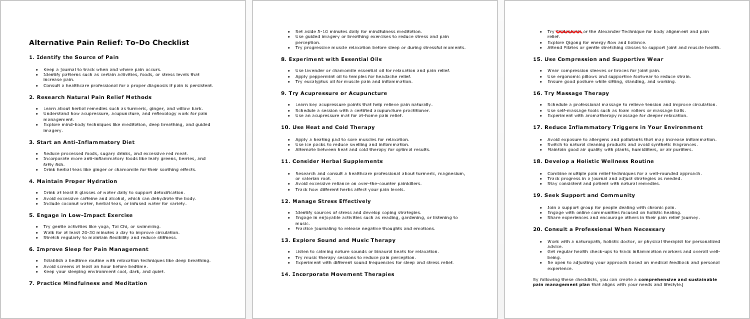
Alternative Pain Relief – FAQs

Alternative Pain Relief – Salespage Content

Package Details:
Word Count: 20 214 Words
Number of Pages: 106
Alternative Pain Relief – Bonus Content
Checklist
Word Count: 765 words
FAQs
Word Count: 859 words
Salespage Content
Word Count: 486 words
Total Word Count: 22 324 Words
Your PLR License Terms
PERMISSIONS: What Can You Do With These Materials?
Sell the content basically as it is (with some minor tweaks to make it “yours”).
If you are going to claim copyright to anything created with this content, then you must substantially change at 75% of the content to distinguish yourself from other licensees.
Break up the content into small portions to sell as individual reports for $10-$20 each.
Bundle the content with other existing content to create larger products for $47-$97 each.
Setup your own membership site with the content and generate monthly residual payments!
Take the content and convert it into a multiple-week “eclass” that you charge $297-$497 to access!
Use the content to create a “physical” product that you sell for premium prices!
Convert it to audios, videos, membership site content and more.
Excerpt and / or edit portions of the content to give away for free as blog posts, reports, etc. to use as lead magnets, incentives and more!
Create your own original product from it, set it up at a site and “flip” the site for megabucks!
RESTRICTIONS: What Can’t You Do With These Materials?
To protect the value of these products, you may not pass on the rights to your customers. This means that your customers may not have PLR rights or reprint / resell rights passed on to them.
You may not pass on any kind of licensing (PLR, reprint / resell, etc.) to ANY offer created from ANY PORTION OF this content that would allow additional people to sell or give away any portion of the content contained in this package.
You may not offer 100% commission to affiliates selling your version / copy of this product. The maximum affiliate commission you may pay out for offers created that include parts of this content is 75%.
You are not permitted to give the complete materials away in their current state for free – they must be sold. They must be excerpted and / or edited to be given away, unless otherwise noted. Example: You ARE permitted to excerpt portions of content for blog posts, lead magnets, etc.
You may not add this content to any part of an existing customer order that would not require them to make an additional purchase. (IE You cannot add it to a package, membership site, etc. that customers have ALREADY paid for.)
Share Now!

